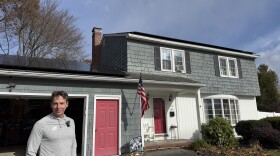Under a proposed rule out of the EPA Monday, New Hampshire will have to come up with its own plan to reduce carbon dioxide emissions. However, many of the building blocks for that plan are already in place.
The new EPA rule says that New Hampshire should emit 486 pounds of carbon per megawatt hour of electricity generated, and that, as of 2012, New Hampshire’s rate was 905 pounds per megawatt hour.
Mike Fitzgerald with the New Hampshire DES says the 486 pound limit is “sort of akin to a speed limit of miles per hour.”
That speed limit is more than four times less what comes out of an average coal-fired power plant, which likely means New England can’t have many of those on-line and meet the new rate.
Responses to the proposed rule came swiftly. The only company that operates coal plants in New Hampshire, Public Service of New Hampshire, said in a statement that while it produced 70 percent less carbon in 2013 compared with 2005, “it may be challenging to grow our success.” Environmental groups like the Clean Air Task Force hailed the rule as “an excellent first bid,” and energy industry groups such as the International Brotherhood of Electrical workers claimed the rule would have far-reaching economic impacts.
Compliant Already?
New Hampshire will try to figure out if it can get below the speed-limit proposed by the EPA with the variety of programs already underway.
For instance, Fitzgerald says the “ideal situation” would be if by simply pointing to the state’s membership in the Regional Greenhouse Gas Initiative (RGGI), a nine-state carbon cap-and-trade program, the EPA would give the state its approval.
RGGI places a cap on how much carbon dioxide can be emitted by power plays, which Fitzgerald thinks is “more analogous to a limit on the total length you can drive.” DES will have to translate the distance-driven cap into the speed-limit number that the EPA is looking for.
The EPA also says energy efficiency programs and state renewable energy goals will be considered toward compliance with the proposed rule, though state officials say they are still working out how those factors will be weighed. New Hampshire has both efficiency programs and a “renewable portfolio standard” which says the state will get 25 percent of its energy from renewables by 2025.
When asked if New Hampshire already had compliance with the EPA rule "in the bag", state officials said that seems to be the case.
New Hampshire will have until 2016 to come up with the plan, and the rule itself won’t be finalized until June of next year.








